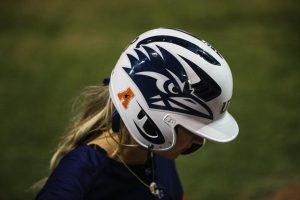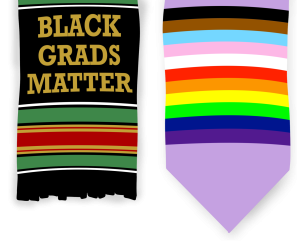Sue Hum, Ph.D., Assistant Professor in the English department, and students in her English 3303 Theory and Practice of Composition, and English 3313 Advanced Composition, are all part of something as large as Texas. The Literary Map of Texas is an ongoing project in Hum’s upper division writing intensive classes.
The Literary Map of Texas was displayed at the 2007 National Council of Teachers of English in New York City. Schools of all education levels have submitted their maps of their respective states. It’s a collaboration effort in many instances. Hum and her students collaborated to create an online map detailing over 100 Texas authors. The website for the map is available at http://colfa.utsa.edu/ecpc/litmap/litmap.html.
The Literary Map of Texas was a student-centered project. Hum was the go-between the two classes. The classes were then divided into groups to discuss what information was important to include in the literary map. Student’s first dilemma was to figure out what constitutes a “Texas author.” The criterion all agreed on was that the author was born, reared, and lives or has lived in Texas; the writing is about Texas cultures or communities; the author claims self-identity as a Texan; and that the author writes about Texas themes or issues.
Students further categorized authors into fiction and nonfiction categories. The range of fiction writing includes poetry; music and song lyrics such as Tejano, folk ballads, corridos, and country western; plays and dramas, novels and short stories, screenplays, and folklore. Nonfiction writing included historical biographies, letters, memoirs, diaries, editorials, essays, sermons, magazine articles, political dissertations.
“(The literary map) incorporates writing assignments that have a purpose outside the classroom,” Hum said.
“Students learn research skills, how to write a good piece and they develop knowledge about writing styles.” Hum continued, “It also develops pride in the literary accomplishments of Texas.”
The biographies of the authors and their literary works are presented in a coherent profile.
“Students learn to understand the value of precise and correct information,” Hum said. “It helps students develop research skills and better evaluate the information they gather on the internet.”
One of the authors featured is award-winning author and Professor Norma E. Cantu, Ph.D., of the English department. “It is an honor to be included in the Literary Map,” said Cantu. Cantu’s book, “Canicula: Snapshots of a Girlhood en la Frontera,” was published by the University of New Mexico Press in 1995. That same year, Cantu won the Aztlan Prize for best work of fiction in English by an emerging Chicano writer in a work that explores aspects of Chicano culture. Since that time, “Canicula” has been a favorite in the classroom at all academic levels.
Cantu’s scholarly interests include folklore, Chicana literature, and borderland studies. “Canicula” is a memoir of her childhood and young adult life in Laredo, Texas.
Other works by Cantu include, “Papeles de Mujer,” “Champu: or Hair Matters,” and “Meditacion Fronteriza: Poems of Life, Love and Work.”
“Sue [Hum] informed me that I was nominated by her students as one of the authors for the Literary Map,” said Cantu. “It is a great feeling to know the students appreciate my work.”
Hum will be able to show off her students’ efforts in November 2008 when the National Council of Teachers of English holds its annual convention in San Antonio where more than 7,000 members, teachers, college faculty, administrators and other educational professions will gather.
Hum has been teaching at UTSA since 2002. Her most recent work is as a co-editor and contributor for the anthology Ways of Seeing, Ways of Speaking: The Integration of Rhetoric and Vision in Constructing the Real, from Parlor Press, November, 2007.









